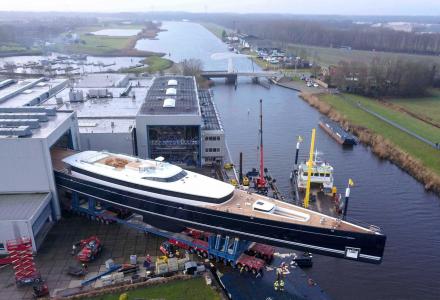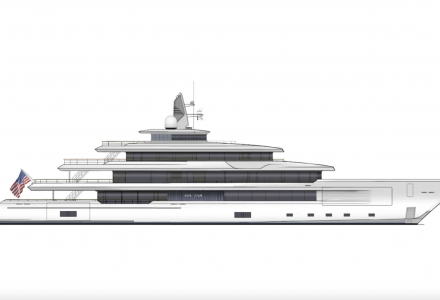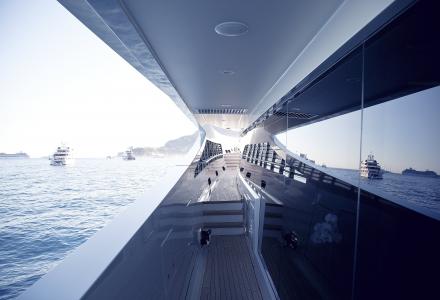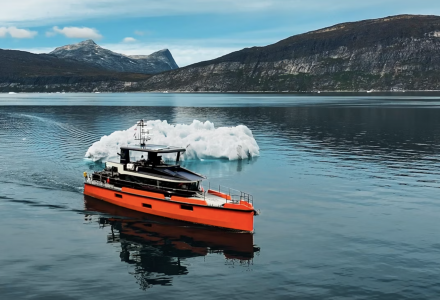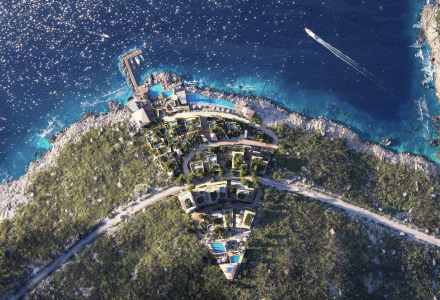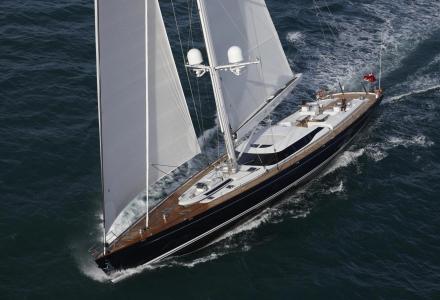Dutch shipyard Royal Huisman has launched their largest superyacht to date and the world’s largest all-aluminium sailing vessel, the 81-metre schooner Sea Eagle II. The launch took place at the builder's main shed in Vollenhove, specially extended for the project. Sea Eagle II reportedly belongs to Taiwanese billionaire businessman and philanthropist Samuel Yen-Liang Yin.
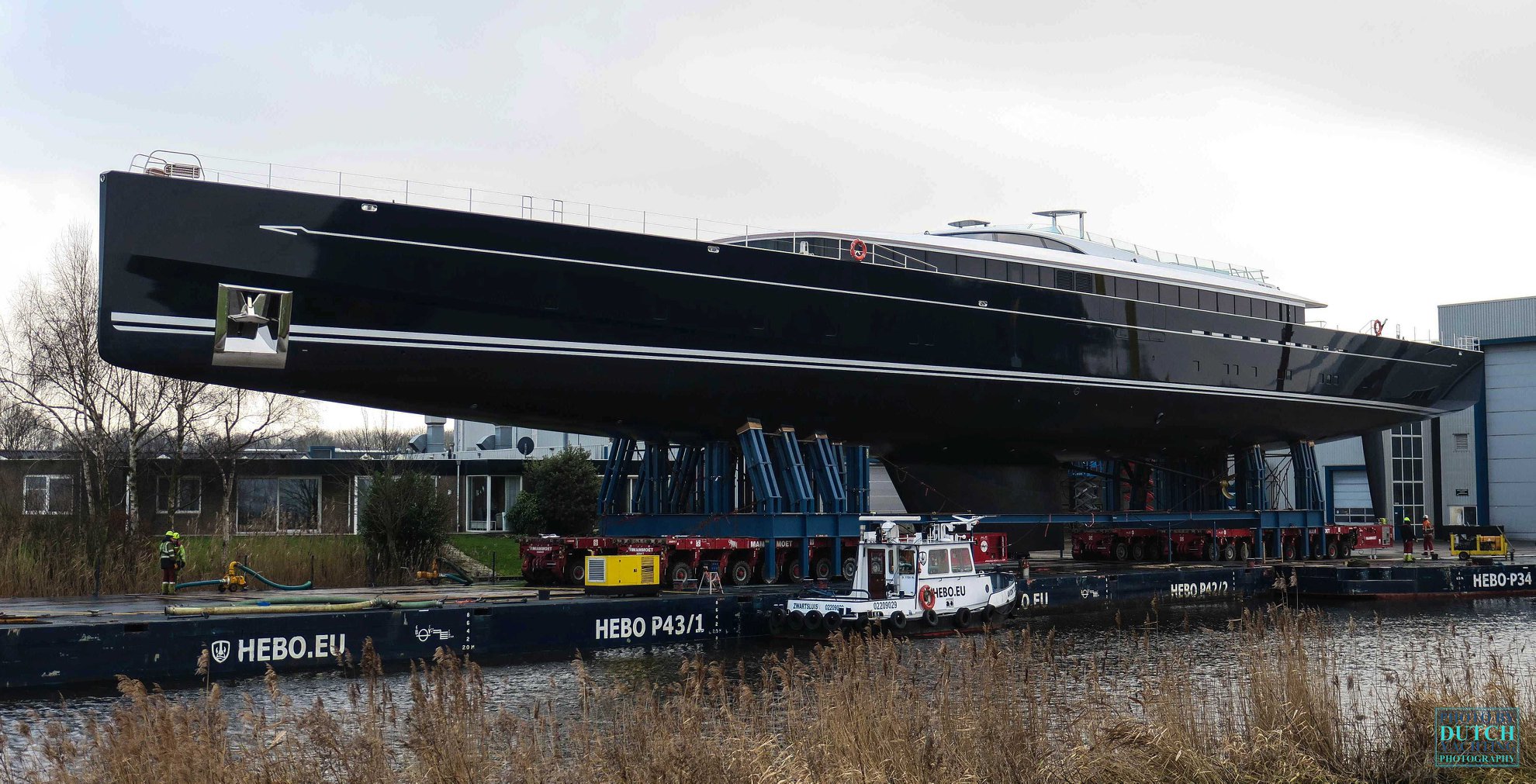
The superyacht came from the drawing boards of designer Mark Whiteley, with naval architecture by Dykstra Naval Architects. The project was first revealed at the 2016 Monaco Yacht Show as the largest Asian-owned yacht. Within a year, Royal Huisman completed the design phase, and began construction in 2017.
The exteriors of Sea Eagle II incorporate the owner’s requirements for world cruising, fast yet comfortable and iconic look. The distinguishing superstructure features a half-raised bridge for inside steering. The yacht’s flybridge offers full controls during sailing, comfortable seating for guests wishing to be close up with the yacht’s navigation, and opportunity for sunbathing. The sheltered main cockpit beneath the flybridge features a bar, sofas and a large table.
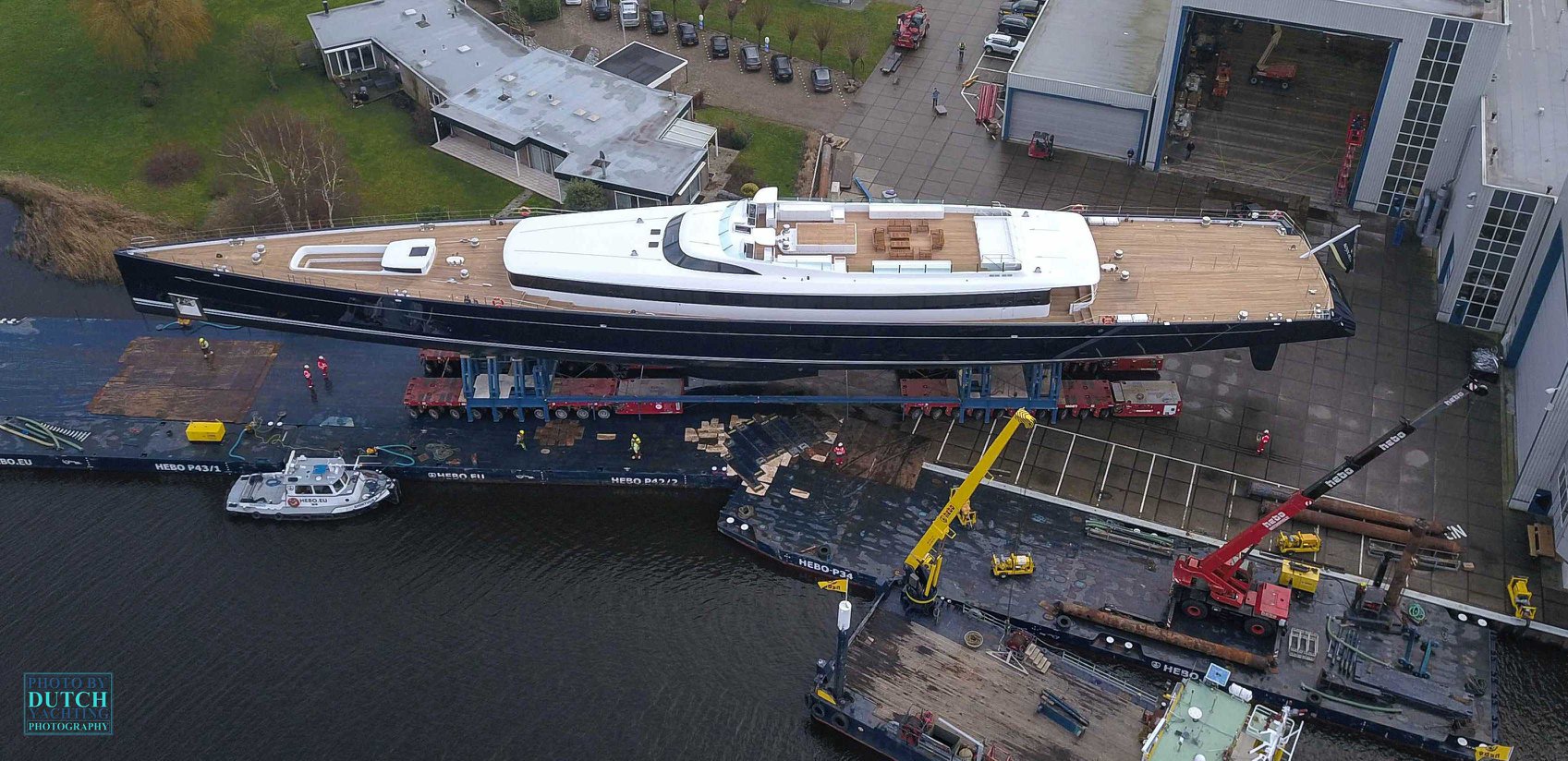
A variety of innovative features enhance the yacht’s appeal. The newly developed sliding Rondal door with individually operated moving glass panels provides a seamless transition from the cockpit into the interior, whereas the flybridge steering stations give access to the hydraulically operated crow’s nest for an exhilarating ride up the main mast with breathtaking views.
Various watersports gear such as water scooters, a large guest tender with dive equipment, kayaks and SUP boards will be stored under the aft deck, and the deck design comprises a number of clever features, such as the crew tender in front being recessed into a pocket, which can be used as a cockpit after launch. The design of the crew entrance on the foredeck ties in with the looks of the main deckhouse.
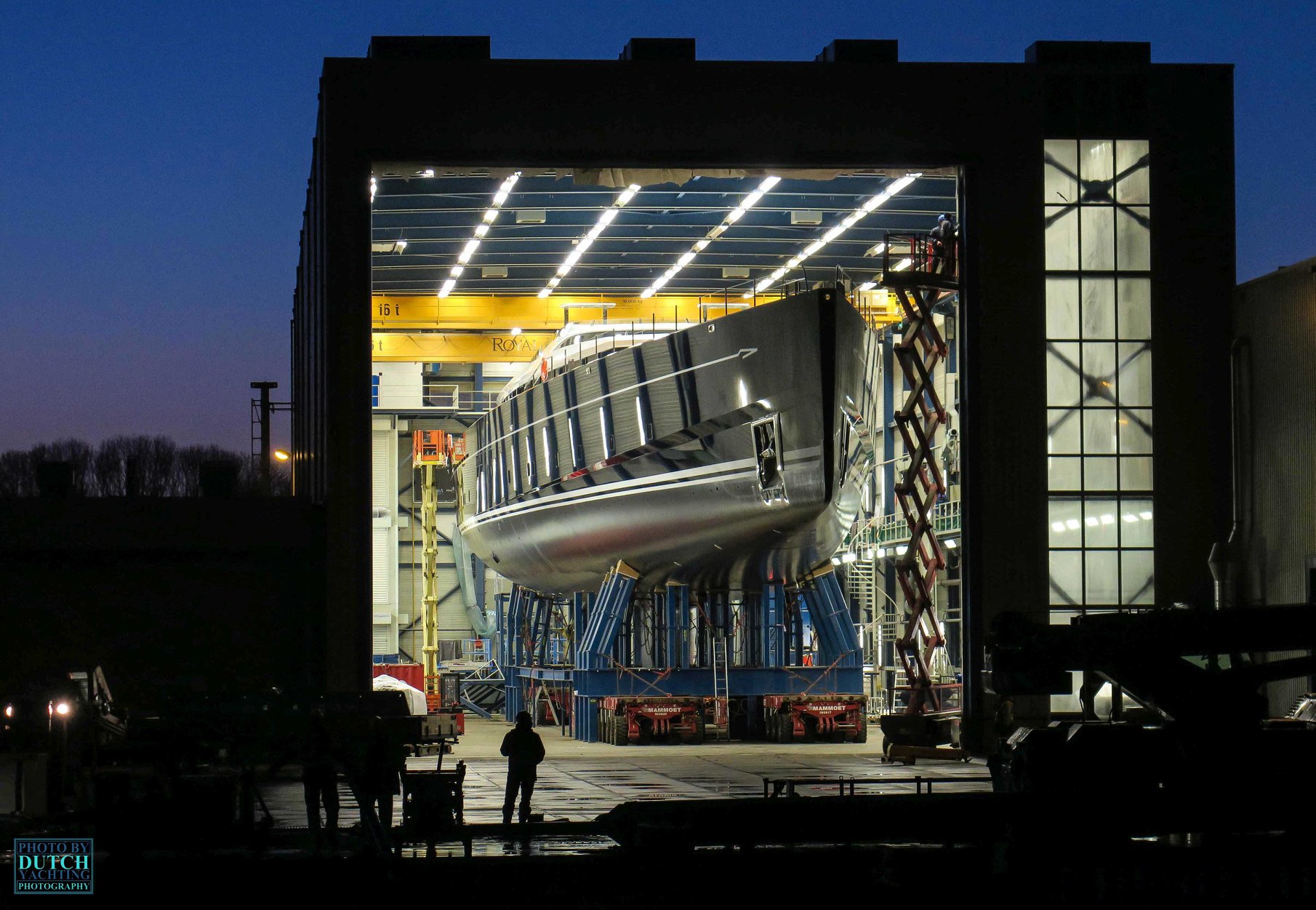
Dykstra Naval Architects have focused all their expertise on the creation of a hull with a distinguishing hard chine and schooner rig that combines good performance with sea kindliness, stability and comfort. The carbon rig by Rondal – ‘clearing Panama Bridge’ – will be supported by carbon standing rigging. Thys Nikkels of Dykstra Naval Architects explains that “the plumb bow, very long waterline, sleek hull and large sail area will give the yacht the required high speed and good performance.”
Mark Whiteley designed a modern interior in balance with the exterior living spaces. The design is based on Alpi Walnut bulkheads and comprises oak floors. The yacht can also be used as a platform for business meetings. The forward part of the superstructure has been reserved for the owner and his guests, featuring a combined saloon with comfortable seating and a large table with 16 seats for formal dining. Accommodation acapicity meanwhile allows to sleep 12 guests.
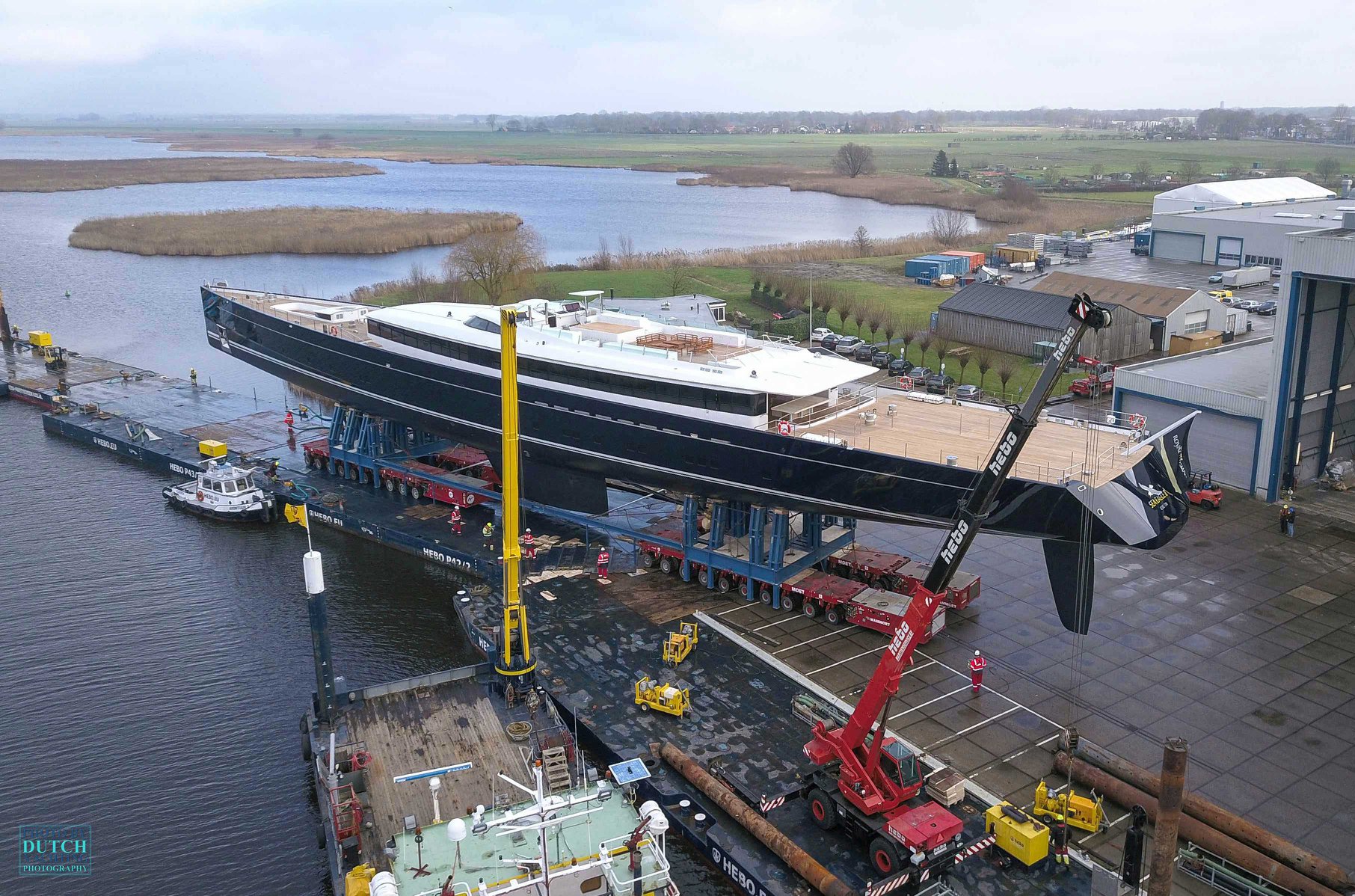
Samuel Yin is currently holding an estimated net worth of $2.7 billion (Forbes). Yin is a chairman of Taiwan's Ruentex Group, which has interests in financial services and real estate; he also has stakes in Sun Art Retail Group, a leading hypermarket operator in China. Noteworthy, he once claimed to donate 95% of his wealth to charity during his lifetime.
Samuel Yin’s previous sailing yacht Sea Eagle is nearly 37 metres shorter and has 800 GT less of interior volume compared to Sea Eagle II.
Photo: Dutch Yachting.
